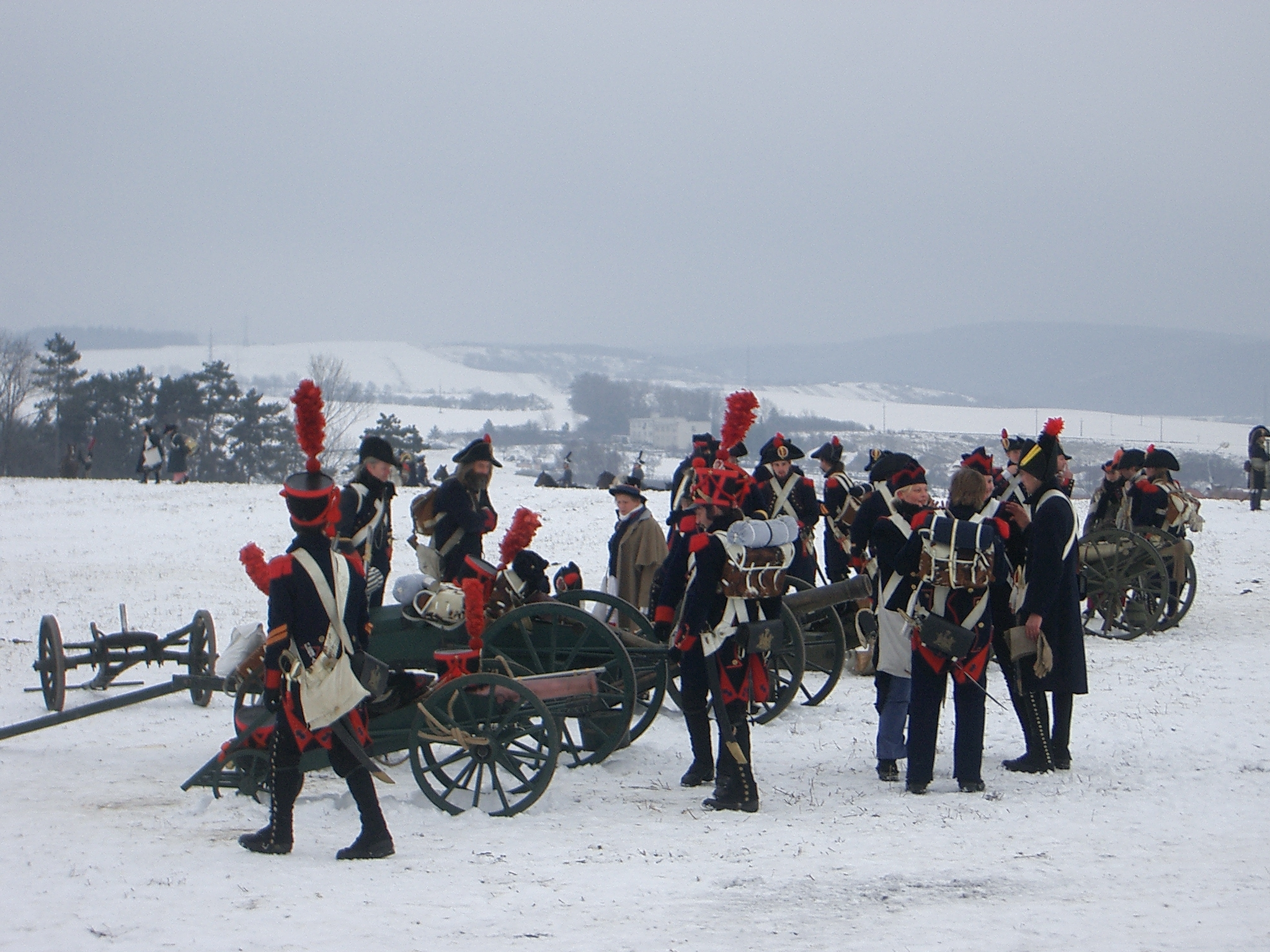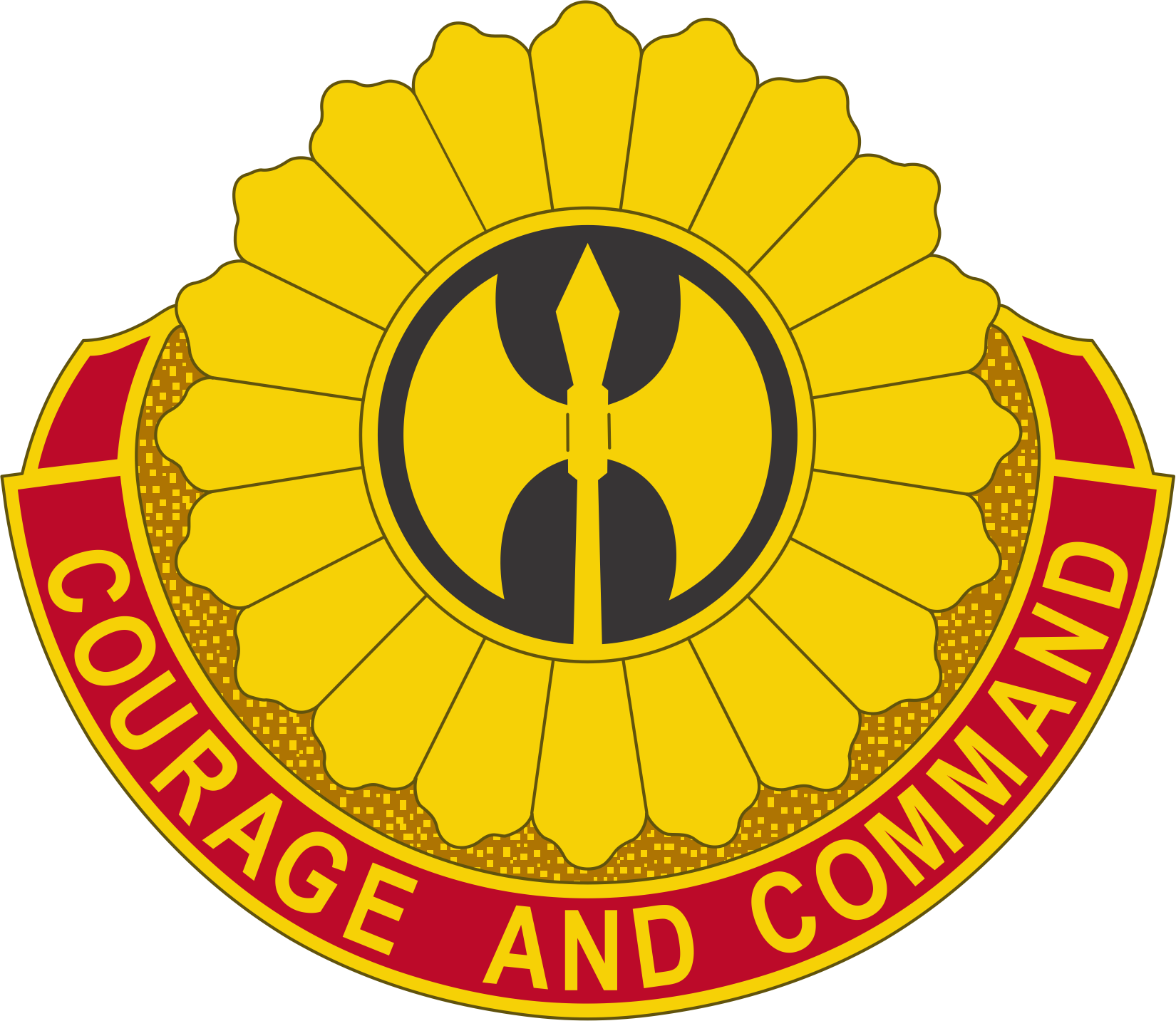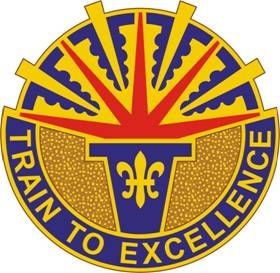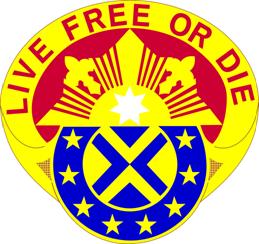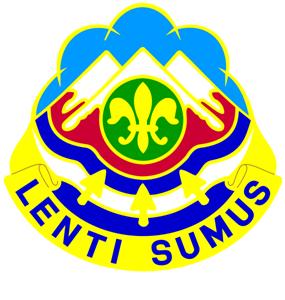|
Field Artillery Brigade
Field Artillery Brigades are field artillery and rocket formations of the United States Army. They were previously named Fires Brigades for a short period. Fires Brigades were then either inactivated and reflagged as Division Artilleries (DIVARTY) or reorganized and redesignated as Field Artillery Brigades. Currently active Field Artillery Brigades are: Active duty artillery brigades: * 17th Field Artillery Brigade, artillery brigade of I Corps * 18th Field Artillery Brigade, artillery brigade of XVIII Airborne Corps * 41st Field Artillery Brigade, artillery brigade of United States Army Europe and Africa * 75th Field Artillery Brigade, artillery brigade of III Armored Corps * 210th Field Artillery Brigade, artillery brigade of Eighth United States Army National Guard artillery brigades: * 45th Field Artillery Brigade (Oklahoma ARNG) * 65th Field Artillery Brigade (Utah ARNG) * 115th Field Artillery Brigade (Wyoming ARNG) * 130th Field Artillery Brigade (Kansas ARNG) * 13 ... [...More Info...] [...Related Items...] OR: [Wikipedia] [Google] [Baidu] |
Field Artillery
Field artillery is a category of mobile artillery used to support armies in the field. These weapons are specialized for mobility, tactical proficiency, short range, long range, and extremely long range target engagement. Until the early 20th century, field artillery were also known as foot artillery, for while the guns were pulled by beasts of burden (often horses), the gun crews would usually march on foot, thus providing fire support mainly to the infantry. This was in contrast to horse artillery, whose emphasis on speed while supporting cavalry units necessitated lighter guns and crews riding on horseback. Whereas horse artillery has been superseded by self-propelled artillery, field artillery has survived to this day both in name and mission, albeit with motor vehicles towing the guns (this towed artillery arrangement is often called mobile artillery), carrying the crews and transporting the ammunition. Modern artillery has also advanced to rapidly deployable whee ... [...More Info...] [...Related Items...] OR: [Wikipedia] [Google] [Baidu] |
130th Field Artillery Brigade
The 130th Field Artillery Brigade is a field artillery brigade of the United States Army, provided by the Kansas Army National Guard. The 130th Field Artillery history in the Kansas Army National Guard dates back to 1917, where its lineage as part of the 35th Infantry Division can be traced through both World Wars, the Korean War and, most recently, the war in Iraq 2003-2011. On June 1, 1978, the 130th was redesignated as the 130th Field Artillery Brigade. In 1985, it was again designated as the 35th Division Artillery with the reactivation of the 35th Infantry Division. The 130th was reconstituted again on Sept. 2, 1997, in the Kansas Army National Guard in Topeka. Following its Operation Iraqi Freedom deployment, the brigade was inactivated on Nov. 10, 2007. The brigade was reactivated on October 19, 2014. Current Structure The brigade now comprises the following units of the Kansas Army National Guard:{{Cite web, url=http://kansastag.gov/NGUARD.asp?PageID=576, title=Ka ... [...More Info...] [...Related Items...] OR: [Wikipedia] [Google] [Baidu] |
4th Infantry Division (United States)
The 4th Infantry Division is a Division (military), division of the United States Army based at Fort Carson, Colorado. It is composed of a division headquarters battalion, three brigade combat teams (two Stryker and one armor), a combat aviation brigade, a division sustainment brigade, and a division artillery. The 4th Infantry Division's official nickname, "Ivy", is a play on words of the Roman numeral ''IV'' or 4. Ivy leaves symbolize tenacity and fidelity which is the basis of the division's motto: "Steadfast and Loyal". The second nickname, "Iron Horse", has been adopted to underscore the speed and power of the division and its soldiers. World War I The 4th Division was organized at Camp Greene, North Carolina on 10 December 1917 under the command of Maj. Gen. George H. Cameron. It was here they adopted their distinctive insignia, the four ivy leaves. The ivy leaf came from the Roman numerals for four (IV) and signified their motto "Steadfast and Loyal". The division ... [...More Info...] [...Related Items...] OR: [Wikipedia] [Google] [Baidu] |
214th Fires Brigade (United States)
The 214th Fires Brigade is an inactive field artillery brigade in the United States Army. The brigade inactivated on May 21, 2015, at Fort Sill Fort Sill is a United States Army post north of Lawton, Oklahoma, about 85 miles (136.8 km) southwest of Oklahoma City. It covers almost . The fort was first built during the Indian Wars. It is designated as a National Historic Landma ..., Oklahoma. History Following its transformation to a modular field artillery brigade in 2006, the 214th Fires Brigade consisted of 2 MLRS battalions (2-4th Field Artillery "Deep Attack" and 1-14th Field Artillery), a 155 mm self-propelled howitzer battalion (2-5th Field Artillery), a target acquisition battery (H/26th Field Artillery), the 168th Brigade Support Battalion, and the 529th Signal Company. Prior to the modular transformation, the 214th Field Artillery Brigade consisted of 3 MLRS battalions: 2-4th Field Artillery, 3-13th Field Artillery, and 1-14th Field Artillery. The Br ... [...More Info...] [...Related Items...] OR: [Wikipedia] [Google] [Baidu] |
1st Armored Division (United States)
The 1st Armored Division, nicknamed "Old Ironsides," is a combined arms division of the United States Army. The division is part of III Armored Corps and operates out of Fort Bliss in El Paso, Texas. It was the first armored division of the United States' Army to see battle in World War II. Since World War II, the division has been involved in the Korean War, Cuban Missile Crisis, Persian Gulf War, Iraq, Afghanistan, and several other operations. The division has also received numerous awards and recognition. Insignia The division was nicknamed "Old Ironsides" by its first commander, Major General Bruce Magruder, after he saw a picture of the frigate USS Constitution, USS ''Constitution'', also nicknamed "Old Ironsides". The large "1" at the top represents the numerical designation of the division and the insignia is used as a basis for most of the other sub-unit insignias. In January 1918, the Tank Corps of the American Expeditionary Forces, Tank Corps of the United Sta ... [...More Info...] [...Related Items...] OR: [Wikipedia] [Google] [Baidu] |
212th Fires Brigade (United States)
{{Infobox military unit , unit_name= 212th Fires Brigade , image=212FABdeSSI.svg , image_size = 200 , caption=Shoulder Sleeve Insignia , dates= , country= {{USA , allegiance=Active duty , branch= Field Artillery Branch (United States) , type= Field artillery Brigade , role= , size= Brigade , command_structure= , garrison=Fort Bliss , garrison_label= , nickname= , patron= , motto=Courage and Command , colors= , colors_label= , march= , mascot= , equipment= , equipment_label= , battles= Operation Iraqi Freedom , anniversaries= , decorations= , battle_honours= , disbanded= , flying_hours= , website= , identification_symbol= , identification_symbol_label=Distinctive Unit Insignia , identification_symbol_2= , identification_symbol_2_label= Distinctive Unit Insignia , identification_symbol_3= , identification_symbol_3_label= , identification_symbol_4= , identification_symbol_4_label= The 212th Fires Brigade is an artillery brigade in the United States Army. It was based at Fort Blis ... [...More Info...] [...Related Items...] OR: [Wikipedia] [Google] [Baidu] |
196th Maneuver Enhancement Brigade
196th may refer to: *196th (2/1st Highland Light Infantry) Brigade, Territorial Force division of the British Army during the First World War *196th Battalion (Western Universities), CEF, unit in the Canadian Expeditionary Force during the First World War *196th Division (People's Republic of China), military formation of the Chinese People's Volunteer Army *196th Infantry Brigade (United States) ("Chargers"), part of the United States Army Reserve's 98th Division *196th Infantry Regiment (United States), infantry regiment of the United States Army National Guard *196th Ohio Infantry (or 196th OVI), infantry regiment in the Union Army during the American Civil War *196th Reconnaissance Squadron (196 RS), unit of the 163d Reconnaissance Wing of the California Air National Guard *196th Street (Manhattan) *Pennsylvania's 196th Representative District See also *196 (number) *196 (other) * 196, the year 196 (CXCVI) of the Julian calendar *196 BC __NOTOC__ Year 196 BC was a ye ... [...More Info...] [...Related Items...] OR: [Wikipedia] [Google] [Baidu] |
3rd Infantry Division Artillery (United States)
The 3rd Infantry Division Artillery (DIVARTY) is the divisional artillery command for the 3rd Infantry Division at Fort Stewart, Georgia. The DIVARTY has served with the division in World Wars I and II, the Korean War, Operation Iraqi Freedom, and in peacetime at Fort Stewart and Germany. The DIVARTY was inactivated in 2004 as part of transformation to modular brigade combat teams, but was reactivated on 17 October 2014 to provide fire support coordination and mission command for the training and readiness of Field Artillery units across the division. History World War I The 3rd Field Artillery Brigade was constituted in the Regular Army as part of the 3rd Division (later 3rd Infantry Division) on 12 November 1917, and organized at Camp Stanley, Texas, on 26 November 1917. Besides the headquarters, the brigade’s initial units were the 10th Field Artillery Regiment, stationed at Fort Douglas, Utah, with 24 75mm guns; the 76th Field Artillery Regiment, at Fort Bliss, Texas, wi ... [...More Info...] [...Related Items...] OR: [Wikipedia] [Google] [Baidu] |
42nd Fires Brigade (United States)
4 (four) is a number, numeral (linguistics), numeral and numerical digit, digit. It is the natural number following 3 and preceding 5. It is the smallest semiprime and composite number, and is tetraphobia, considered unlucky in many East Asian cultures. In mathematics Four is the smallest composite number, its proper divisors being and . Four is the sum and product of two with itself: 2 + 2 = 4 = 2 x 2, the only number b such that a + a = b = a x a, which also makes four the smallest squared prime number p^. In Knuth's up-arrow notation, , and so forth, for any number of up arrows. By consequence, four is the only square one more than a prime number, specifically 3, three. The sum of the first four prime numbers 2, two + 3, three + 5, five + 7, seven is the only sum of four consecutive prime numbers that yields an Parity (mathematics), odd prime number, 17 (number), seventeen, which is the fourth super-prime. Four lies between the first proper pair of twin primes, 3, three and ... [...More Info...] [...Related Items...] OR: [Wikipedia] [Google] [Baidu] |
402nd Field Artillery Brigade (United States)
The 402nd Field Artillery Brigade has been absorbed into the 5th Armored Brigade (United States). The 402nd was an AC/RC/NG unit based at Fort Bliss, Texas. The unit is responsible for training selected United States Army Reserve & Army National Guard units along the West coast. The unit was formerly designated as 3rd Brigade, 91st Infantry Division, and as the 402nd Brigade (Training). The Brigade is a subordinate unit of the First United States Army (First Army Division West). From 1985 to 1996, the Brigade conducted artillery training at Fort Sill, Oklahoma. In 2006, as part of the Army's Transformation of the United States Army, the 3/91st was redesignated as the 402nd Field Artillery Brigade. The 402nd Field Artillery Brigade was constituted 25 January 1943 in the United States Army as Headquarters and Headquarters Battery, 402nd Field Artillery Group and later activated on 15 March 1943 at Camp Butner, North Carolina. The unit participated in the following campaigns durin ... [...More Info...] [...Related Items...] OR: [Wikipedia] [Google] [Baidu] |
197th Field Artillery Brigade
The 197th Field Artillery Brigade ("Concord Volunteers") is a field artillery brigade of the New Hampshire Army National Guard. Current structure * 197th Field Artillery Brigade (197th FAB), New Hampshire Army National Guard ** Headquarters and Headquarters Battery (HHB), New Hampshire Army National Guard ** 1st Battalion, 103rd Field Artillery Regiment (1–103rd FAR) ( M777 A2 howitzer), Rhode Island Army National Guard ** 1st Battalion, 119th Field Artillery Regiment (1–119th FAR) ( M777 A2 howitzer), Michigan Army National Guard ** 1st Battalion, 182nd Field Artillery Regiment (1–182nd FAR) (HIMARS) High Mobility Artillery Rocket System, Michigan Army National Guard ** 3rd Battalion, 197th Field Artillery Regiment (3–197th FAR) (HIMARS) High Mobility Artillery Rocket System, New Hampshire Army National Guard ** 1st Battalion, 201st Field Artillery Regiment (1–201st FAR) ( M109 A6 howitzer), West Virginia Army National Guard ** 3643rd Brigade Support Battalion (364 ... [...More Info...] [...Related Items...] OR: [Wikipedia] [Google] [Baidu] |
169th Field Artillery Brigade
The 169th Field Artillery Brigade (formerly the 169th Fires Brigade) is an artillery brigade in the US Army National Guard. It is part of the Colorado Army National Guard. History The brigade headquarters was organized on 19 June 1909 as Company M of the 1st Infantry, Colorado National Guard at Denver. The company was transferred to the 2nd Infantry on 19 November, retaining its letter, and on 15 August 1913 returned to the 1st Infantry as Company G. When the National Guard was called up for duty on the Mexican border in 1916, the company was mustered into Federal service on 19 June as Company B of the 1st Colorado Infantry Battalion. After the American entry into World War I, the unit was drafted into Federal service on 5 August 1917 and on 24 September became Company B of the 157th Infantry Regiment, part of the 40th Division. It was sent to France with the division but did not see combat as a unit, being used as a depot to provide replacements. The company returned to th ... [...More Info...] [...Related Items...] OR: [Wikipedia] [Google] [Baidu] |
